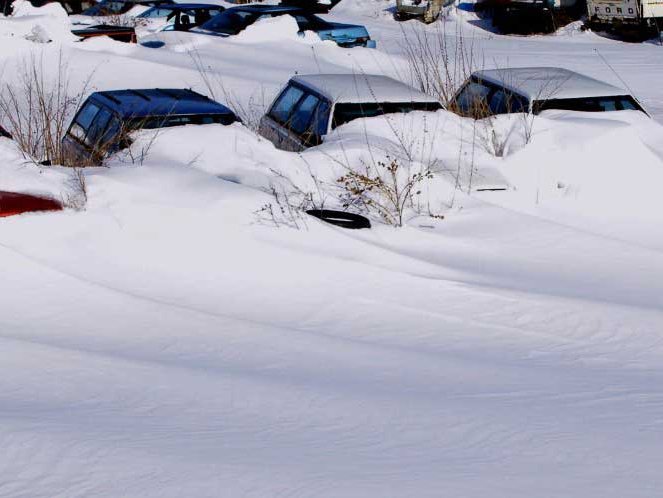Here at OnMilwaukee.com, we pride ourselves in being Milwaukee experts. Since it is literally our job to eat, sleep and breathe all things Brew City, we get many questions from our readers.
This is where we answer them.
In the "Ask OMC" series, we take your questions, big or small, and track down the answers. Send your query to askomc@staff.onmilwaukee.com. Be sure to include your name and location, and we will consider it for our next installment.
Our question today comes from Dave in St. Francis, who asks: "I've heard a few weather guys predict that we're going to have a milder winter this year. What makes them think that?"
Realizing that this question is a bit out of our league, we asked three experts -- local TV weathermen Mark Baden of Channel 12, Vince Condella of Fox 6 and Craig Koplien of Channel 4.
Here are their answers:
Mark Baden
Chief meteorologist, WISN Weatherwatch 12
Dear Dave,
The predictions that you have heard are from the National Weather Service's Climate Prediction Center. They have concluded that the upper Midwest has a good chance that the overall winter (December, January and February) will be above normal.
They use many methods to come to this; however, the biggest reason is that we are not under El Nino or La Nina conditions. When the waters in the equatorial Pacific Ocean are cooler than normal, this is called La Nina. El Nino is the opposite.
Last winter, La Nina helped contribute to a very snowy winter for us. This year the Pacific Ocean waters are near normal. This, along with winter temperatures of the last 20 years averaging above normal, has led to the forecasters expecting temperatures above normal. Keep in mind that the average overall winter temperature is 25. If we end the winter at 25.1 degrees, that would be above normal but no one in our area would be able to tell the difference.
In conclusion, we will still have cold temperatures this winter and snow, but I don't think we will duplicate last winter's epic snowfall.
Vince Condella
Chief meteorologist, Fox 6
I can never quite understand long-range seasonal forecasts. There is no way to know how our winter will turn out. There are simply too many variables. This will not be an El Nino or La Nina year, i.e. there are neither wamer-than-normal or colder-than-normal sea surface temperatures in the equatorial Pacific Ocean.
This points to an "average" or typical winter.
However, meteorologists also look at things like the Atlantic Oscillation and the Multi-Decadal Oscillation. These are shifts in atmospheric pressure patterns and sea surface temperatures that may affect upper air weather patterns.
A simple shift in the upper air wind means a low-pressure system may pass 50 miles to our north rather than 50 miles to our south. That minor shift means the difference between a foot of snow and 2 inches of rain.
The bottom line is simple: don't bet your wallet on seasonal forecasts.
Craig Koplien
Meteorologist, Today's TMJ4
In short, we "kind of" have indications that it will be a mild winter. But, it's complicated. Here is more than you probably want to know:
The long-term forecasting specialists at the National Oceanic and Atmospheric Administration's Climate Prediction Center (in short, the National Weather Service) issued their outlook for the winter a few weeks ago. As everyone knows, there are very few certainties in weather forecasting -- and there definitely are not any in projecting what may happen over an entire season. Because of that, the NWS issues their outlook in a way that can be confusing, even to some in the weather business.
What they give us is the probability that the average temperature over the entire winter will be above, below and near normal. This winter's outlook is for a:
- 50 percent chance that temperatures will average above normal
- 34 percent chance that temperatures will average near normal
- 16 percent chance that temperatures will average below normal
Therefore, if you're a betting guy, you like your chances that it will be a mild winter.
Nevertheless, it's not a sure thing ... and it's inaccurate to say, "The winter outlook is for above normal temperatures." Again, there is a better chance of above normal temperatures, but there still is a chance for them to be below normal.
Another thing to remember, the outlook refers to the average temperature over the entire winter. Therefore, the 50 percent chance of above normal temperatures does not suggest we will not have any very cold weather. It just means that our bouts with cold weather will likely be outnumbered by longer, or more substantial, stretches of warm weather.
You think all of that business about temperatures is less than definitive? Get a load of the precipitation (rain and snow) outlook:
- 33 percent chance that temperatures will average above normal
- 33 percent chance that temperatures will average near normal
- 33 percent chance that temperatures will average below normal
That helps, hey? Here is a hedge I am willing to make -- there is almost no chance we will have as much snow this winter as we had last year. We had near record-setting snow last year. The odds are extremely low that would happen in back to back years.
Plus, the presence of La Nina (unusually cool Pacific Ocean waters) was the biggest reason for all that snow last year. La Nina is not expected this year. All of that said, while I think record snowfall is a long shot, we could still have an abovenormal amount, based on the NWS outlook.







